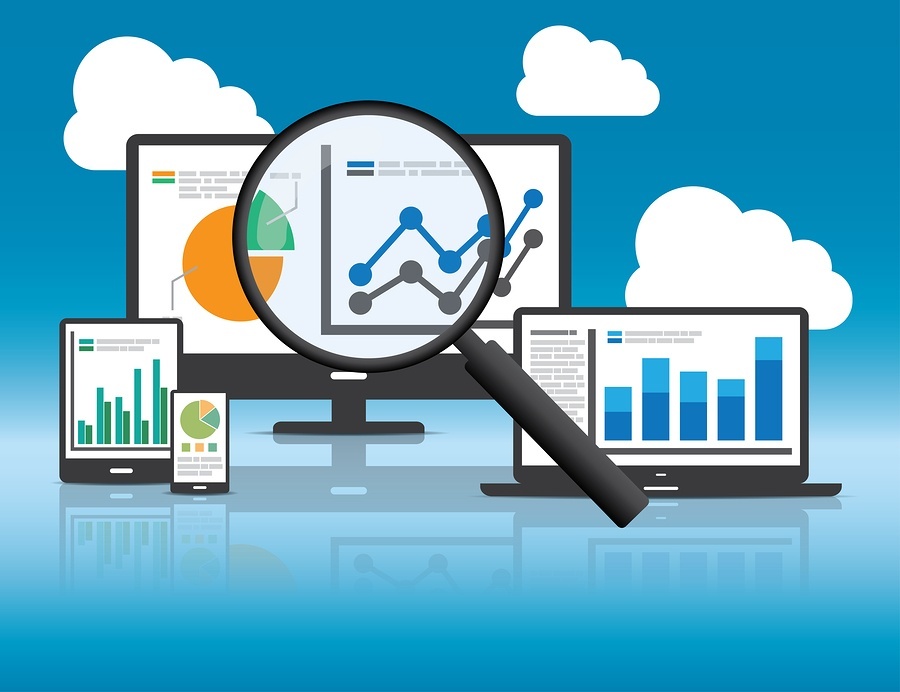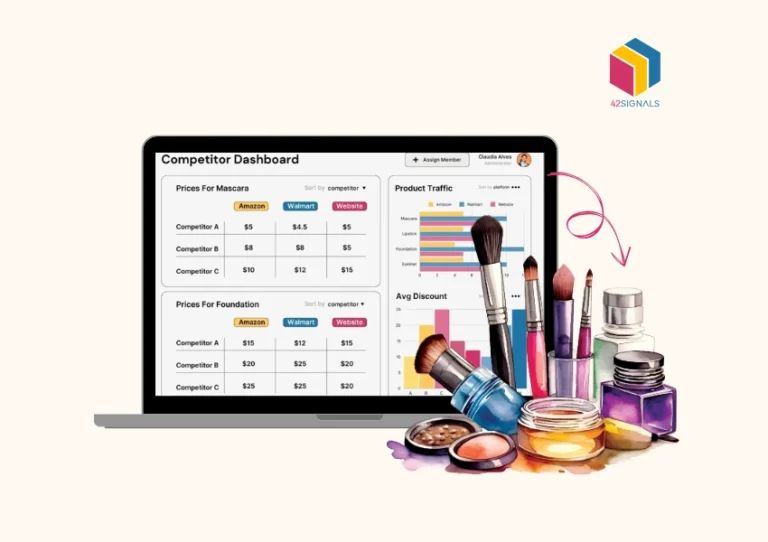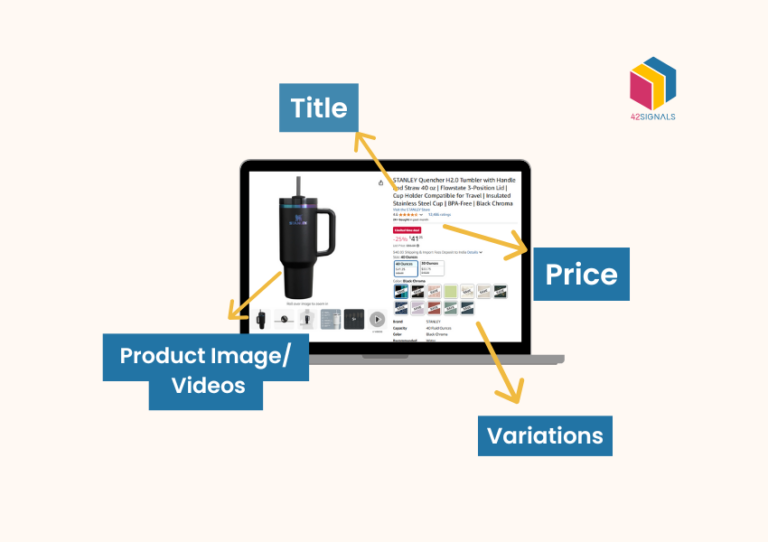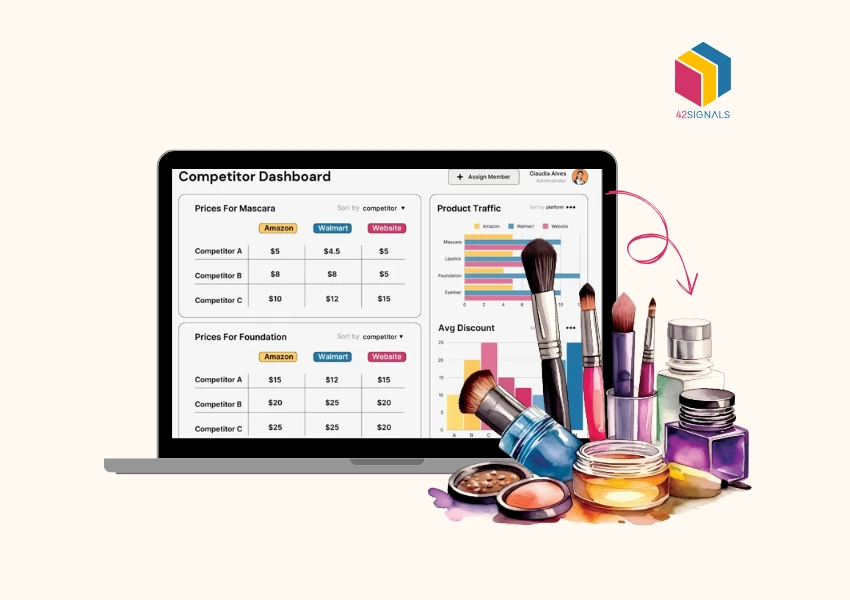E-commerce has taken the world by storm, enabling consumers to access a vast array of products and services from the comfort of their homes. This digital revolution has transformed the way people shop, making it easier and more convenient to find and purchase items online. However, with this ease of access comes a set of unique challenges that businesses must navigate to stay competitive. That’s why customer analytics is so important.
One of the most significant challenges facing e-commerce businesses today is the sheer volume of data at their disposal. Both businesses and consumers have access to more information than ever before. A simple Google search can reveal a wealth of information about a product, including user reviews, ratings, pros and cons, and even video demonstrations. In this environment, understanding what your customers are saying about your brand and products is more critical than ever before. This is where Voice of Customer (VoC) Analytics comes into play.
What is Voice of Customer Analytics?
Voice of Customer (VoC) analytics is a powerful tool that enables businesses to analyze and interpret customer feedback. This feedback can come from a variety of sources, including surveys, product reviews, social media mentions, and direct interactions with customer service teams. Customer analytics involves collecting, processing, and analyzing this data to extract actionable insights that can drive business decisions.
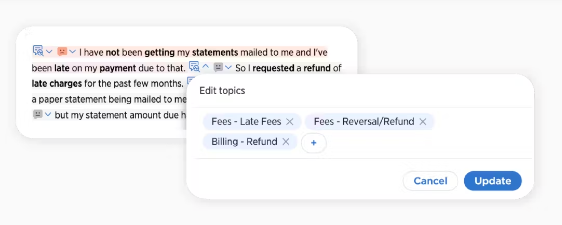
Image Source: MonkeyLearn
The real magic of Customer analytics lies in its ability to transform raw, unstructured data into valuable insights. By leveraging advanced algorithms and machine learning techniques, VoC analytics applications can identify patterns, trends, and sentiments within customer feedback. These insights allow businesses to pinpoint areas where they excel, identify pain points that need addressing, and fine-tune their offerings to better meet customer expectations.
The Immense Value for E-commerce
The e-commerce industry presents a unique set of challenges that traditional brick-and-mortar stores do not face. One of the most significant challenges is the lack of physical interaction with customers. In a physical store, businesses can observe customer behavior, gauge their reactions to products, and engage in real-time conversations. However, in the online world, businesses often operate in the dark, relying on digital interactions to understand their customers.
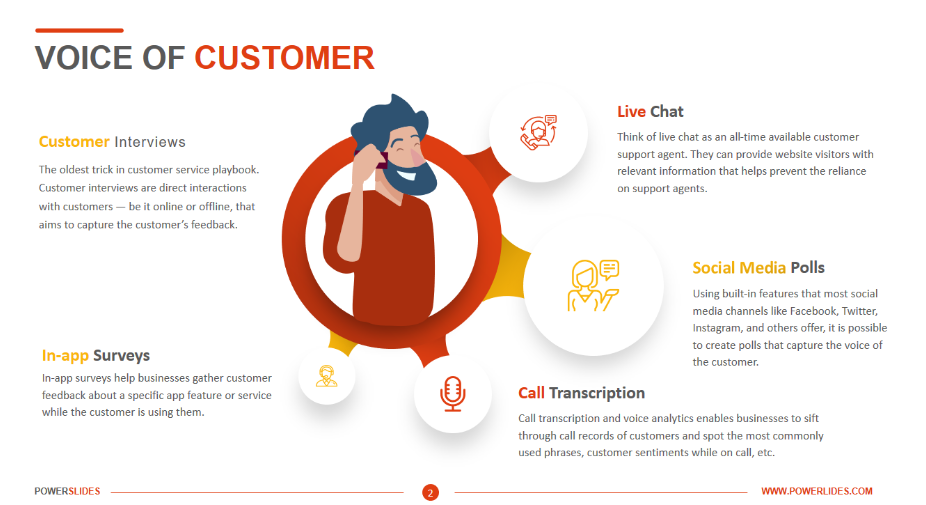
Image Source: Powerslides
This is where VoC analytics becomes invaluable. It acts as the ears and eyes of an e-commerce platform, providing businesses with the insights they need to thrive in a digital environment. Here are some of the ways customer analytics can benefit e-commerce businesses:
1. Identifying Trends
One of the most powerful features of VoC analytics is its ability to analyze large volumes of customer feedback and identify emerging trends. For example, if a particular product feature is gaining popularity among customers, customer analytics can quickly spot this trend, allowing the business to capitalize on it. Conversely, if a common issue or complaint is emerging, businesses can address it before it escalates.
2. Personalizing Customer Experiences
Personalization is key to success in the e-commerce industry. Customers expect tailored experiences that cater to their unique preferences and needs. VoC analytics can help e-commerce platforms achieve this by providing insights into individual customer preferences and behaviors. By understanding what customers want, businesses can personalize their offerings, recommendations, and user interfaces to create a more engaging and satisfying shopping experience.
3. Driving Innovation
Innovation is the lifeblood of any successful e-commerce business. The most impactful product enhancements and new features often stem from customer feedback. Customer analytics can help businesses identify these opportunities for innovation by highlighting areas where customers are expressing a need or desire for improvement. By acting on these insights, businesses can stay ahead of the competition and continuously improve their offerings.
Implementing VoC Analytics in E-commerce
The beauty of VoC analytics lies in its adaptability. It can be integrated into various touchpoints throughout the customer journey, allowing businesses to gather feedback at multiple stages.
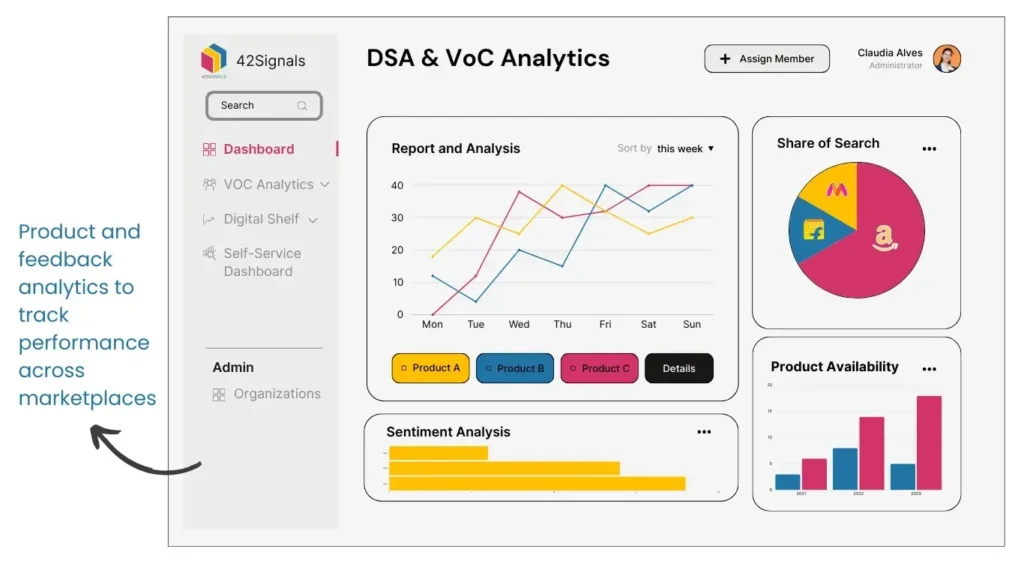
Here are some of the ways e-commerce businesses can implement customer analytics:
1. Post-Purchase Surveys
One of the most effective ways to gather feedback is through post-purchase surveys. After a customer completes a purchase, they can be prompted to provide insights into their shopping experience, product satisfaction, and areas for improvement. This feedback is invaluable for identifying any issues that may have arisen during the purchase process and ensuring that customers are satisfied with their purchase.
2. On-Site Pop-Ups
On-site pop-ups are another effective way to capture real-time feedback. These pop-ups can be triggered based on specific actions or behaviors, such as when a customer is browsing a particular product or is about to leave the site. By capturing feedback in real-time, businesses can gain insights into any navigation issues, content gaps, or other factors that may be affecting the customer experience.
3. Email Feedback Forms
Email feedback forms are a tried-and-true method for gathering customer feedback. By regularly reaching out to customers via email and asking for their input, businesses can gather valuable insights into product performance, delivery experiences, and overall satisfaction. This feedback can then be used to make data-driven decisions that improve the customer experience.
The Future of Customer Analytics
As technology continues to evolve, so too does the potential of VoC analytics. The rise of artificial intelligence (AI) and machine learning (ML) is making customer analytics more sophisticated and powerful than ever before. These technologies enable businesses to predict future trends, gauge customer sentiment with greater accuracy, and even simulate customer journeys to identify potential pain points.
To know more about how 42Signals provides the right tools to understand customer opinions visit our pricing page and grow in the right direction.
Frequently Asked Questions
How do you get Voice of Customer data?
There are several ways to collect Voice of Customer (VoC) data, including:
- Conducting customer surveys or polls
- Analyzing customer feedback from social media, review sites, and other online sources
- Collecting data from customer support interactions, such as call center records or chatbot conversations
- Using tools like Net Promoter Score (NPS) or Customer Satisfaction (CSAT) to measure customer sentiment
- Conducting focus groups or user testing to gather qualitative feedback
- Analyzing customer behavior data, such as purchase history or website interaction patterns, to identify trends and preferences
How do you use Voice of Customer data?
Once you have collected VoC data, there are many ways to use it to improve your business. Here are a few examples:
- Identify areas for improvement: Use VoC data to pinpoint areas where customers are unhappy or dissatisfied, and make changes to address those issues.
- Develop targeted marketing campaigns: Use VoC data to understand what matters most to your customers, and create marketing messages that resonate with them.
- Improve product development: Use VoC data to inform product roadmaps and ensure that new products or features meet customer needs.
- Enhance customer experience: Use VoC data to identify touchpoints where customers are struggling or feeling frustrated, and make improvements to enhance their overall experience.
- Measure the effectiveness of initiatives: Use VoC data to track the impact of changes made in response to customer feedback, and adjust course as needed.
What is the use of voice of the customer data in making data-driven marketing decisions?
Voice of the Customer (VoC) data provides valuable insights into customer needs, preferences, and pain points. By leveraging this data, marketers can make more informed decisions about how to effectively engage with their target audience. Some specific uses of VoC data in data-driven marketing include:
- Understanding customer segments
- Informing content strategy
- Personalization
- Campaign measurement
- Product positioning
